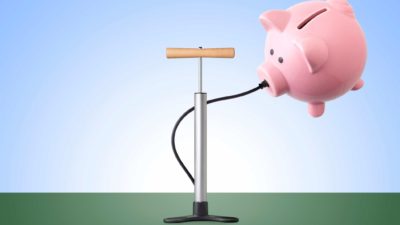Having a diversified retirement portfolio is likely to offer you some protection from the expected market volatility that is poised to haunt investors this year.
I've heard the argument from some experts who believe that diversification is only for those who don't know what they are doing. That philosophy might work for these experts but it doesn't for most retail investors.
Experts who devote their careers to understanding the ins and outs of a handful of industries can afford to have a high-conviction portfolio of stocks that are concentrated in a few sectors.
Most investors don't have the resources to build the same knowledge base and that's why it is important to spread the risk out across multiple industries and geographies.
This is particularly so in an uncertain and volatile economic environment like the one we face in 2019 and this means if you haven't already constructed a diversified portfolio, you should!
Doing this isn't hard either and you only need to follow the four steps listed below. In an ideal situation, you should also be diversified across other asset classes and not just focus on equities.
However, for the purpose of this article, I'll be looking only at ASX shares.
- Minimum number of stocks
This is a tricky question for many beginners. Statistically, you should hold between 15 and 20 S&P/ASX 200 (Index:^AXJO) (ASX:XJO) stocks if you want your portfolio to generate similar returns to the index.
The number range is calculated using multiple regression and you risk having too concentrated a portfolio if you have fewer stocks than that.
This can be an issue for those starting with a modest capital base as it can get expensive very quickly to buy that many stocks.
The good news is that you can also buy an exchange traded fund (ETF) that follows the ASX 200.
The downside to an ETF is that there is a holding cost even though ETFs are advertised as a relatively low-cost way to gain exposure to a stock index.
If you buy shares directly, you only pay for brokerage and it doesn't cost you anything to hold the stocks (assuming you are not using debt to buy shares and we ignore opportunity costs).
ETFs on the other hand do have explicit and implicit costs as these providers need to charge fees to run the ETF. These costs are often reflected in the ask/bid spread of the security and in the value of the ETF.
You might find that the value of an ETF may not rise as much as the underlying index over time and could fall harder when the market corrects (experts refer to this as tracking error).
Nonetheless, ETFs still represent one of the lowest-cost options to trading an underlying asset or index although you should shop around as the fees on similar ETFs can vary. Some also think this is a small price to pay as they don't have to regularly review their share portfolio.
- Top-down vs. bottom-up
Many stock pickers prefer to use a bottom-up approach to selecting stocks and would encourage investors to follow suit.
However, when you are looking to build a diverse portfolio, it's beneficial to also use a top-down strategy.
A bottom-up strategy is one where you start off looking at the quality of an ASX-listed company, while the top-down method requires you to start looking at a sector before drilling down to individual stocks.
I generally use the bottom-up approach as that allows me to pick the best long-term shares but that's only because I already have a diversified portfolio.
Those that don't will often find it more useful to start looking at sectors before picking the best in the industry to ensure you don't end up with too many stocks operating in the same space.
- Size matters
Many experts would encourage investors to stick only to blue-chip stocks as these tend to be less risky.
However, this can be a fallacy from my experience as portfolios that are exposed to quality stocks of different market capitalisations often have an edge.
Small doesn't always mean inferior. There are many small cap stocks that dominate an attractive niche and have a very strong management team.
Only focusing on blue-chips will severely limit your pool of options and restrict your ability to diversify.
If you only looked at the big caps, you will probably be overweight on the miners and the banks – and this actually increases your risks, not lowers it.
What you need to decide is how much capital to allocate to large and small caps. There's no universal answer to this question as this really depends on your individual circumstances.
- Don't be afraid to pay for expert insights
This takes me to the last point. Novice investors are often better off paying to access experts and tools to help them get started.
You could be better off getting expert help to develop a long-term investment plan and seeking advice on the amount of capital to allocate to each investment.
You should also take the time and effort to educate yourself, which could include paying for classes and buying investment books to understand the basics.
Subscribing to investment services like those offered by the Motley Fool should also be an option to look at.
I know no one likes to spend money, especially before you make any, but arming yourself with knowledge will probably save you from making costly mistakes.







